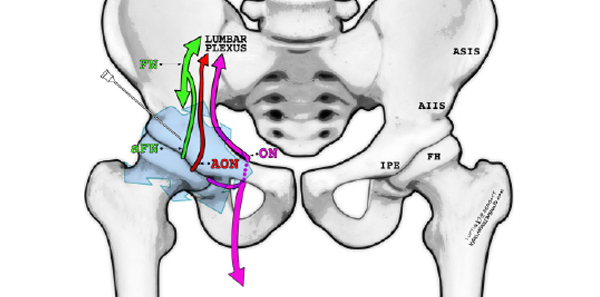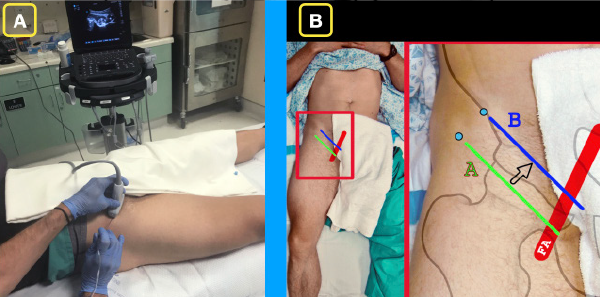
Hip fractures are one of the most frequently encountered complaints in the emergency department, with more than 300,000 patients hospitalized annually in the United States.1 Hip fractures significantly increase the short- and long-term morbidity and mortality of older patients.2 Especially in older patients, the pain from this injury is often undertreated, leading to further morbidity, such as increased delirium and delays in recovery.3 Current evidence strongly suggests that multimodal analgesia can decrease morbidity and mortality for patients with hip fractures.4,5
Explore This Issue
ACEP Now: Vol 41 – No 02 – February 2022It has become common practice for emergency physicians to manage the pain from hip fractures with a combination of systemic analgesics and femoral nerve blocks (FNBs) or fascia iliaca blocks (FIBs). These blocks classically target the femoral nerve and have shown moderate analgesia. However, these blocks may provide incomplete pain relief since the articular branches that supply the hip joint originate more proximal to where the FNB/FIBs are performed.
A New Technique for Hip Injuries
The pericapsular nerve group (PENG) block may be a superior regional block for such injuries in the emergency department. This block was originally described in 2018 for total hip arthroplasties, later used for degenerative hip disease, and recently expanded for traumatic hip and pelvic fractures.6 Also, in the emergency department, the PENG block may be the ideal block for pain control for rami fractures. Anatomical research confirms that the PENG block reaches these additional articular branches from the femoral and obturator nerves, which innervate the hip by depositing local anesthetic within the myofascial plane between the psoas muscle and superior pubic ramus.7
The PENG block may be the ideal regional block for such hip injuries in the emergency department as it can be performed rapidly, provides excellent pain relief, and spares motor function deficits often seen with femoral nerve blocks.
Anatomy and Innervation
The PENG block targets the terminal sensory branches of the femoral, obturator, and accessory obturator nerves, which are primarily responsible for hip and pelvis innervation. The location of these structures relative to the pelvis is depicted in Figure 1. These nerves branch off proximally from the lumbar plexus and travel deep within the pelvis. Therefore, they are not reliably affected by the more distal FNB/FIB.8
 Figure 2A: The ultrasound system is placed contralateral to the affected hip so that the operator has a clear line of sight of the needle as well as the ultrasound screen.
Figure 2A: The ultrasound system is placed contralateral to the affected hip so that the operator has a clear line of sight of the needle as well as the ultrasound screen.
Pages: 1 2 3 4 5 | Single Page





No Responses to “Benefits of Using the Pericapsular Nerve Group (PENG) Block”